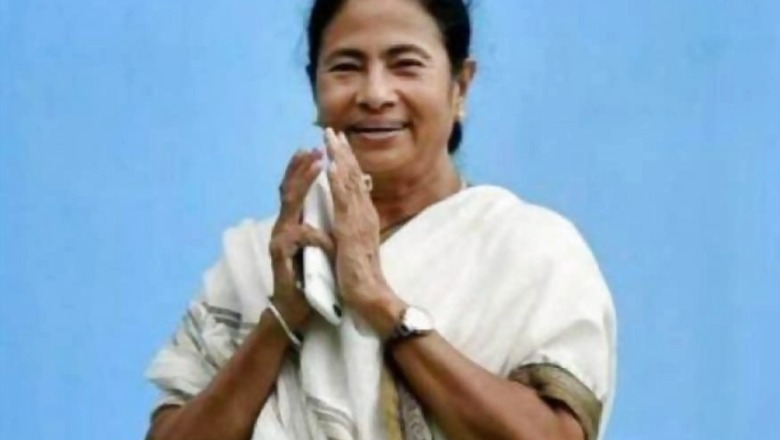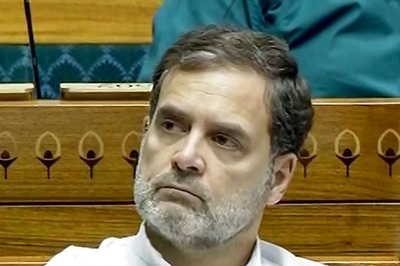
views
Anti-incumbency worked and in 1977 the Left Front ousted the Congress government and ruled Bengal for 34 years thereafter.
Amid slogans of “Amar naam, tomar naam, Vietnam (my name, your name, Vietnam)”, labour disputes, the Naxal movement, industrialisation in Bengal was badly hit (even during the United Front government in the late 1960s).
Once the crown and pride of Bengal, companies like Braithwaite, Burn & Company, Indian Standard Wagon, Guest Keen Williams, Jessop & Company suffered major losses with frequent lockouts due to labour issues.
Similarly, in the 1990s, companies like Ispat Industries, Bata, Brooke Bond, Shaw Wallace, Philips India had left Kolkata to invest in other cities for better prospects. It gave an adverse message to industrialists across the globe, forcing business giants to move out of Bengal.
In 1942, Lakshmipat Singhania set up Aluminium Corporation of India (ACI) near Asansol. It faced union issues and the ACI was nationalised in 1974. Singhania’s family members moved out of Bengal.
Even the Birlas left Kolkata to expand their business. Many present-day industrialists have strong connections with Kolkata but despite that Bengal lacks large-scale industrialisation.
While the state was struggling to cope with unemployment, refugee problems, and resentment against “class enemies”, senior CPI (M) leader Buddhadeb Bhattacharjee took charge as chief minister in 2000 after Jyoti Basu.
Knowing his priority was to break the image of Bengal as an unfavourable place to invest, Bhattacharjee adopted several measures to woo investors. The most prestigious one was the Tata Nano car factory at Singur in Hooghly district.
It took him six years after becoming the CM to brand Bengal as an investment destination with the announcement that the “Tatas are coming to Singur”. Bengal suddenly drew the attention of business tycoons as the project seemed set to alter the image of the state.
On May 23, 2006, Bhattacharjee announced that the Tatas were investing in Singur for the Nano car factory.
Four months later, on September 25, 2006, the government started distributing cheques to land owners at Beraberi village in Singur and the same day Trinamool Congress chief Mamata Banerjee agitated in front of the BDO office in Singur, demanding cancellation of the project.
On December 4, 2007, Mamata went on a hunger strike in protest against the “forcible acquisition of farmland” for the proposed car-manufacturing project. On December 28, she was admitted to a nursing home after breaking her 25-day fast. On October 3, 2008, Tata Group chairman Ratan Tata announced that they were pulling out of Singur.
The decision by the Tatas once again shook the faith of the business community in Bengal.
Twelve years later, the same “class enemies” continue to haunt Bengal as people are asking where the state stands, in reality and not on paper, as far as investment and industries are concerned.
In 2011, Mamata became the chief minister and started focusing on the Bengal Global Business Summit since 2015. She travelled around the world to convince industrialists to invest in Bengal.
Till last year, the West Bengal government claimed to receive investment intentions worth Rs 2.84 trillion. “Total 86 MoUs (memorandums of understanding) have been signed; 1,200 business-to-business meetings and 45 businesses-to-consumer meetings have been held,” Mamata had said.
As per state government statistics, from 2015 to 2019, the total investment intentions in Bengal were valued at Rs 9.47 trillion, but opposition leaders say such proposals are gathering dust as nothing concrete has happened so far.
Even governor Jagdeep Dhankhar questioned Bengal’s stand on industrialisation and tweeted, “Government @MamataOfficial must come out with a white paper on impact of five editions of Bengal Global Business Summit (BGBS). Details of projected investment of over Rupees 12.3 lakh crores be made known. Also the names of organizations/people who were engaged for organizing.”
Author and political expert Kapil Thakur said, “TMC has taken many image-makeover initiatives considering the upcoming state polls. Even the state CM has changed her tone while responding to opposition leaders and central ministers. Now she is focusing on industries as elections are coming and she is desperate to come out of the tag that she is against industrialisation (post TMC agitations in Singur and Nandigram during Left rule). I think she has realised that people of Bengal have not taken her stand on Singur on a positive note and therefore she is concentrating more on investments.”
Trinamool insiders say that since 2015, Mamata is desperate to bring Bengal back on the global industrial map. In the past one year, she has instructed her officials to expedite the process of ease of doing business in the state and recently she announced three big projects which were finalised in the meeting of Cabinet Committee on Infrastructure-2020.
“We are going to build a deep-sea port at Tajpur. We had requested the Centre for a joint project but we haven’t got any response, so we have decided to do it ourselves with another partner that would be decided through a tender,” Mamata said on August 26, 2020 at the state secretariat Nabanna.
She further said, “Also, Reliance Jio has agreed to set up a cable-landing station at Digha. Reliance Jio had bid to build the station and we have allotted them land.”
Mamata believes the cable-landing station will transform West Bengal into a major IT and ITES hub and it will draw huge investments and generate employment. “In India unemployment increased by 42 per cent but in Bengal it’s decreased by 40 per cent,” Mamata said while addressing a virtual meet to celebrate the foundation day of Trinamool Chhatra Parishad on August 28, 2020.
Knowing that she came to power riding waves of the anti-land acquisition movements in Singur against the Tata Nano plant, and in Nandigram against the Salem group’s chemical hub project, Mamata has so far handled land acquisition in Bengal carefully.
The administration faced some protests from tribal people who objected to the Deocha Pachami coal block in Birbhum district, but the government says the grievances were taken care of.
Since the TMC coming to power in 2011, the Deocha-Pachami-Harinsingha-Dewanganj coal block is the biggest economic project taken up by Mamata. The project is likely to draw huge investment (Rs 12,000 crore approx) and it is likely to generate lakhs of jobs.
On July 29, 2020, Mamata tweeted, “Chief Secretary Shri Rajiva Sinha ji, other senior state & district officials have held detailed consultation with the people of Md. Bazar Block at Deocha. The entire coal mining project was explained at length & all queries by the relevant stakeholders were addressed. We will create a model for India to execute large projects like Deocha Pachami Coal Block. This shall be done in phases & with full public support by adopting best mining practices in a time bound manner. Wheels of development in Bengal won’t stop even in times of crises.”
She is also working on inviting people to set up cycle-manufacturing factories in Bengal.
Speaking to News18.com, veteran CPI (M) leader Amiya Patra, said, “Her recent pitch for industrialisation and investment is nothing but political drama ahead of the 2021 assembly polls. Do you think investors will come to Bengal knowing the fact that Tatas moved out because of Mamata Banerjee? She has realised that the upcoming state polls will be fought on the unemployment and industrialisation issues and therefore she is now forced to announce these projects in a press conference.”
He added, “She fought for Singur farmers and now you go to the villages you will find that villagers are angry about her. Now they are demanding factories there. Singur was a major setback and for this Mamata Banerjee should be blamed entirely. With Mamata’s anti industrialisation pitch (when she was in Opposition), our economy declined and the problem of unemployment increased. Mamata has realised that these issues are going to add fuel to the fire.”
When contacted, BJP national secretary Rahul Sinha said, “Her recent pitch for industrialising is to appease the unemployed youths. Bengal is not going to rise under the leadership of Mamata Banerjee. Less than a year left for assembly polls and the TMC is certainly going to vanish from Bengal’s politics.”
TMC leaders said Mamata knows she is racing against time but she is left with no other options except set a few examples to portray herself as ‘investor-friendly Didi’ against the BJP’s ‘speed-breaker Didi’ jibe.


















Comments
0 comment